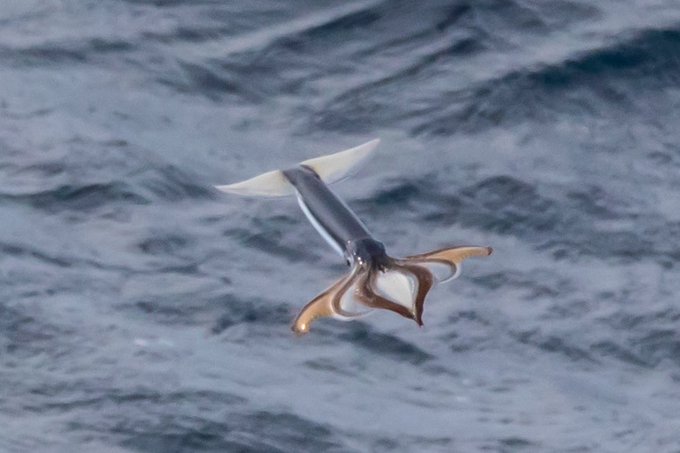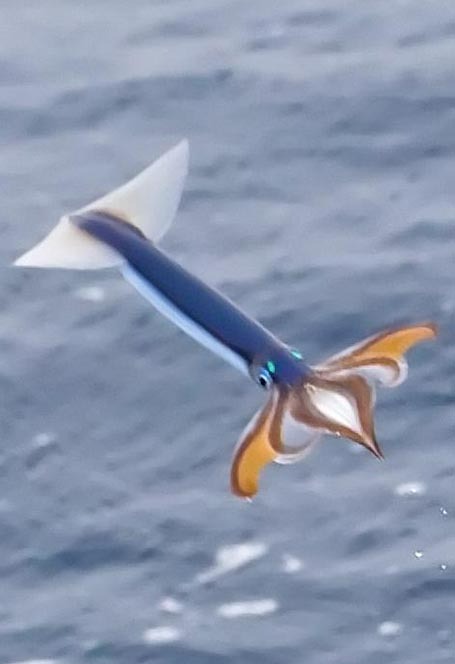
Flying squid are a fascinating group of marine creatures that can propel themselves out of the water and glide through the air. While the exact mechanisms of their flight are still not fully understood, scientists believe that they use a combination of their fins, tentacles, and jet propulsion to achieve liftoff and stay airborne.

One of the most remarkable things about flying squid is that they have been observed to engage in behaviors that prolong the time they remain in the air. This makes their flight more akin to actual flying than just gliding.
One such behavior is flapping their fins. While this may seem surprising, squid have well-developed fins that can provide lift and thrust. By flapping their fins, squid can generate more lift and stay airborne for longer.

Another behavior that flying squid use to prolong their flight is jetting water. Squid have a specialized organ called a siphon that allows them to jet water out of their bodies. This can be used to propel themselves through the water, but it can also be used to generate lift and thrust in the air.
By flapping their fins and jetting water, flying squid can glide for hundreds of feet and even travel short distances over land. This ability to fly allows them to escape from predators, find new food sources, and even mate.

The photo by @whale_nerd is a beautiful example of a flying squid in flight. The squid is flapping its fins and jetting water to prolong its time in the air. This photo is a reminder of the amazing diversity and adaptability of life on Earth.
In addition to the behaviors mentioned above, flying squid may also use other techniques to prolong their flight, such as:
- Changing the position of their tentacles to create more or less drag
- Using their ink to create a mist that can help to slow their descent
- Taking advantage of updrafts and other air currents

Scientists are still learning about the flying abilities of squid, but it is clear that these creatures are capable of complex and sophisticated aerial maneuvers.

Leave a Reply